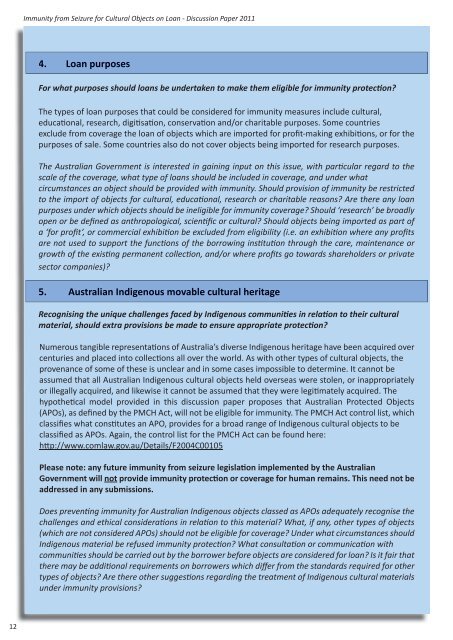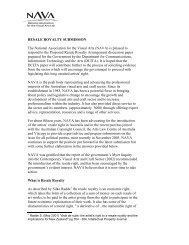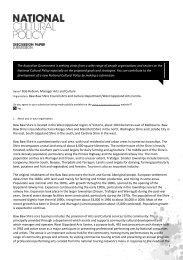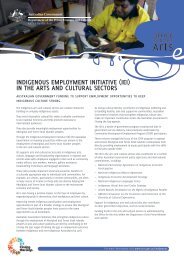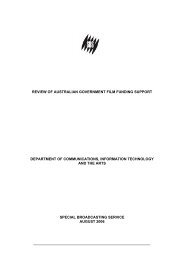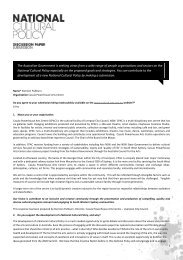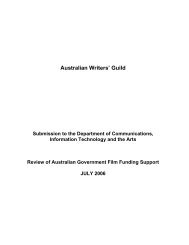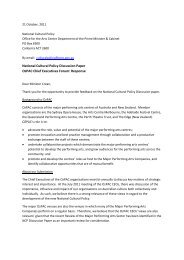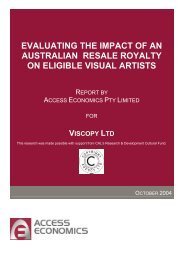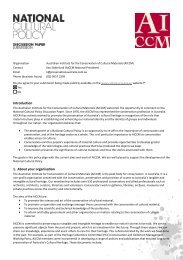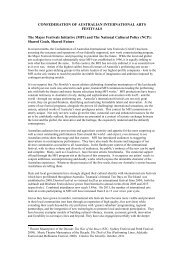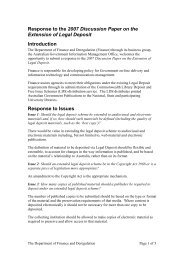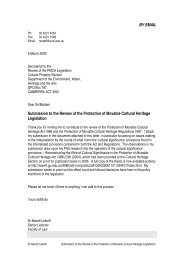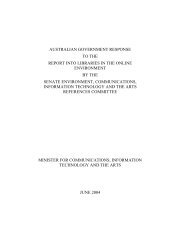Discussion paper (PDF - 459 KB)
Discussion paper (PDF - 459 KB)
Discussion paper (PDF - 459 KB)
Create successful ePaper yourself
Turn your PDF publications into a flip-book with our unique Google optimized e-Paper software.
Immunity from Seizure for Cultural Objects on Loan - <strong>Discussion</strong> Paper 20114. Loan purposesFor what purposes should loans be undertaken to make them eligible for immunity protection?The types of loan purposes that could be considered for immunity measures include cultural,educational, research, digitisation, conservation and/or charitable purposes. Some countriesexclude from coverage the loan of objects which are imported for profit-making exhibitions, or for thepurposes of sale. Some countries also do not cover objects being imported for research purposes.The Australian Government is interested in gaining input on this issue, with particular regard to thescale of the coverage, what type of loans should be included in coverage, and under whatcircumstances an object should be provided with immunity. Should provision of immunity be restrictedto the import of objects for cultural, educational, research or charitable reasons? Are there any loanpurposes under which objects should be ineligible for immunity coverage? Should ‘research’ be broadlyopen or be defined as anthropological, scientific or cultural? Should objects being imported as part ofa ‘for profit’, or commercial exhibition be excluded from eligibility (i.e. an exhibition where any profitsare not used to support the functions of the borrowing institution through the care, maintenance orgrowth of the existing permanent collection, and/or where profits go towards shareholders or privatesector companies)?5. Australian Indigenous movable cultural heritageRecognising the unique challenges faced by Indigenous communities in relation to their culturalmaterial, should extra provisions be made to ensure appropriate protection?Numerous tangible representations of Australia’s diverse Indigenous heritage have been acquired overcenturies and placed into collections all over the world. As with other types of cultural objects, theprovenance of some of these is unclear and in some cases impossible to determine. It cannot beassumed that all Australian Indigenous cultural objects held overseas were stolen, or inappropriatelyor illegally acquired, and likewise it cannot be assumed that they were legitimately acquired. Thehypothetical model provided in this discussion <strong>paper</strong> proposes that Australian Protected Objects(APOs), as defined by the PMCH Act, will not be eligible for immunity. The PMCH Act control list, whichclassifies what constitutes an APO, provides for a broad range of Indigenous cultural objects to beclassified as APOs. Again, the control list for the PMCH Act can be found here:http://www.comlaw.gov.au/Details/F2004C00105Please note: any future immunity from seizure legislation implemented by the AustralianGovernment will not provide immunity protection or coverage for human remains. This need not beaddressed in any submissions.Does preventing immunity for Australian Indigenous objects classed as APOs adequately recognise thechallenges and ethical considerations in relation to this material? What, if any, other types of objects(which are not considered APOs) should not be eligible for coverage? Under what circumstances shouldIndigenous material be refused immunity protection? What consultation or communication withcommunities should be carried out by the borrower before objects are considered for loan? Is it fair thatthere may be additional requirements on borrowers which differ from the standards required for othertypes of objects? Are there other suggestions regarding the treatment of Indigenous cultural materialsunder immunity provisions?12


